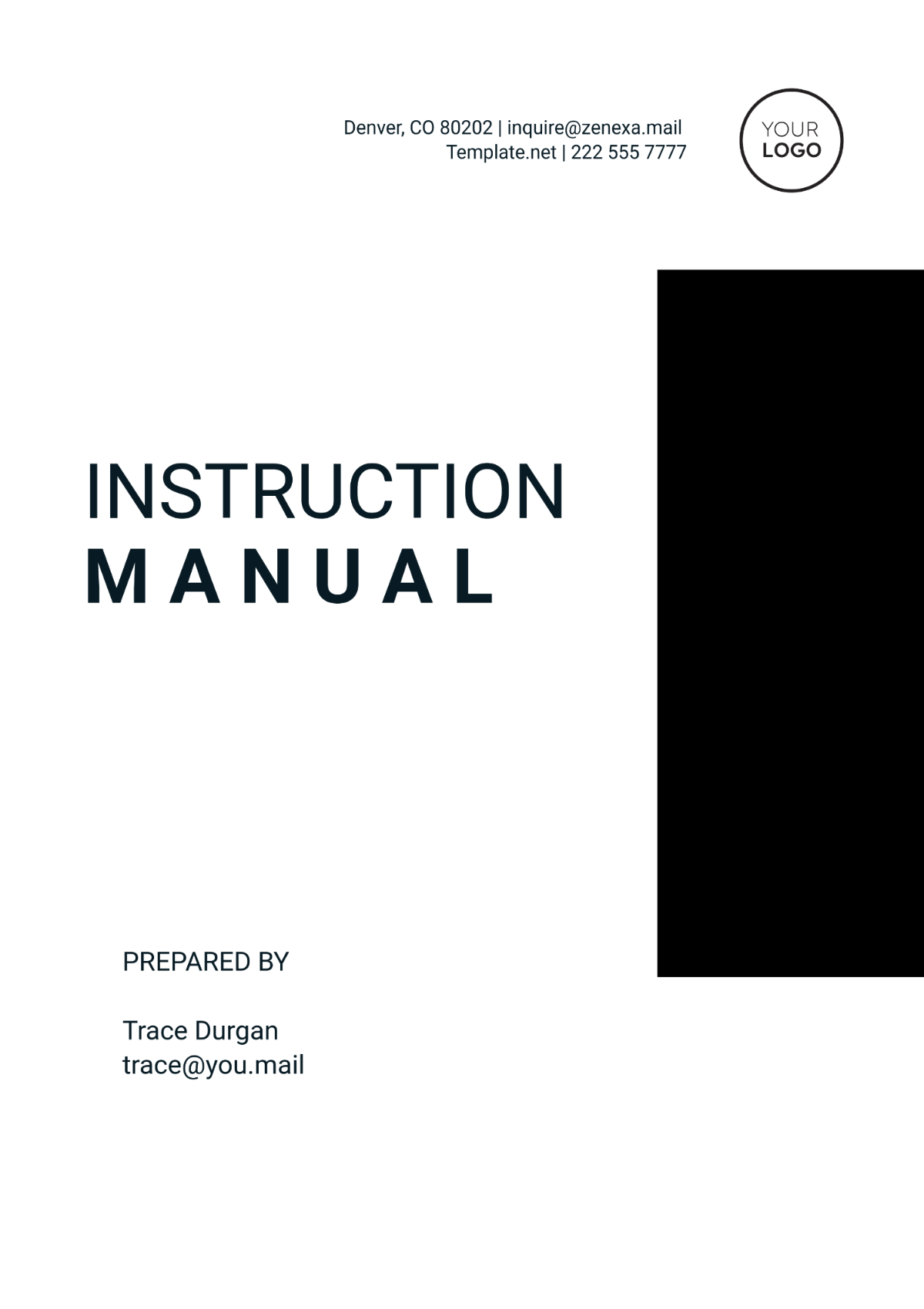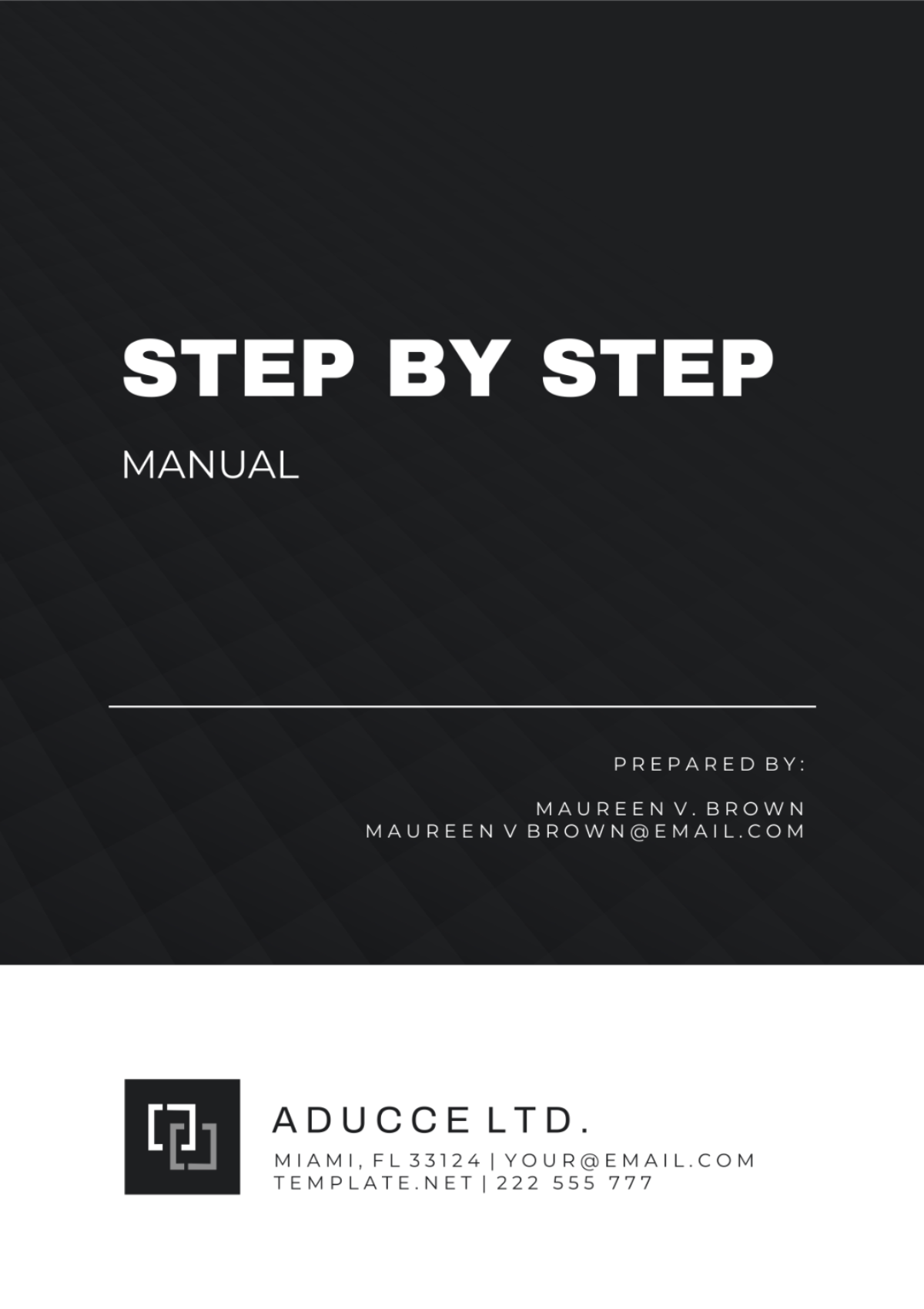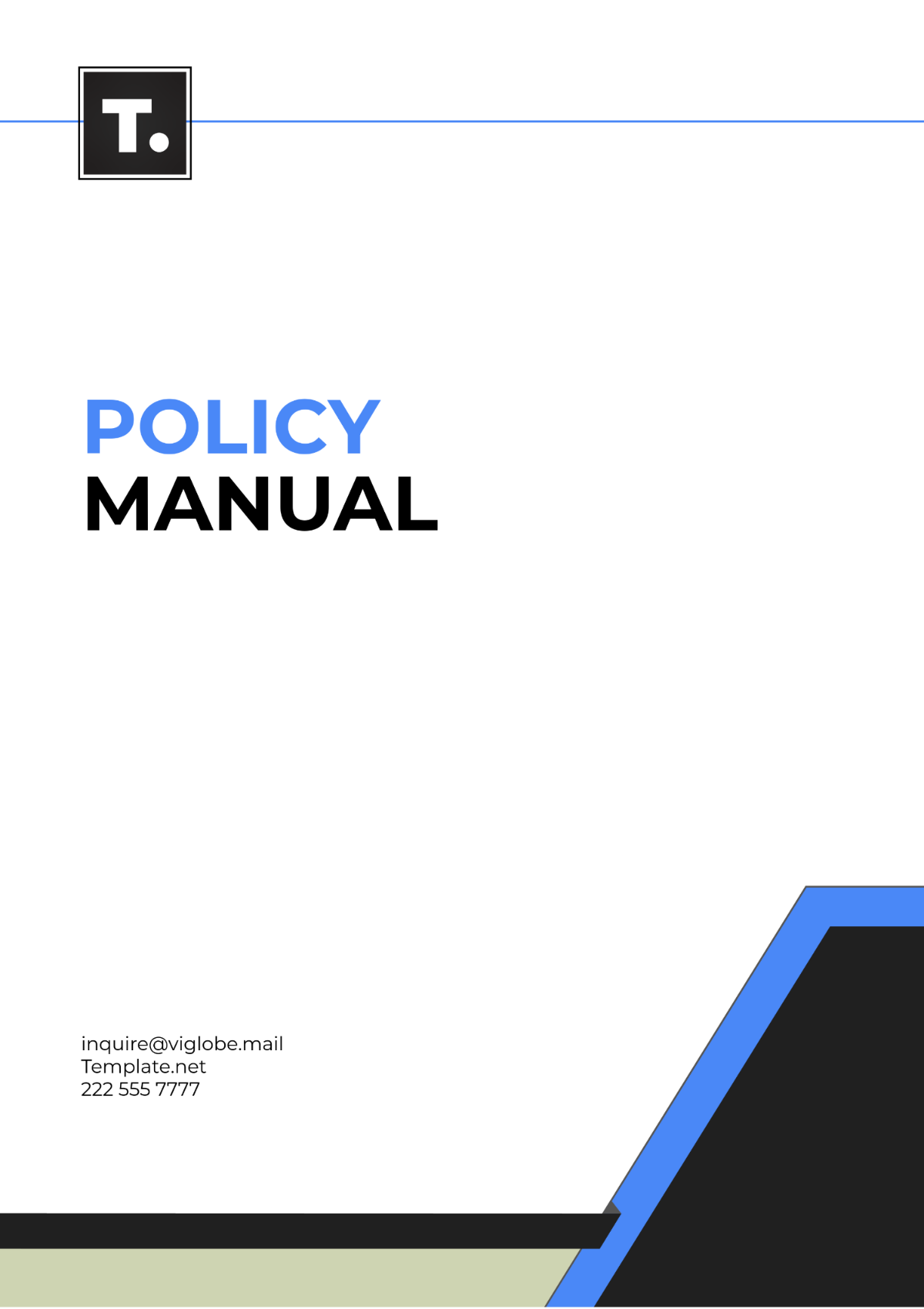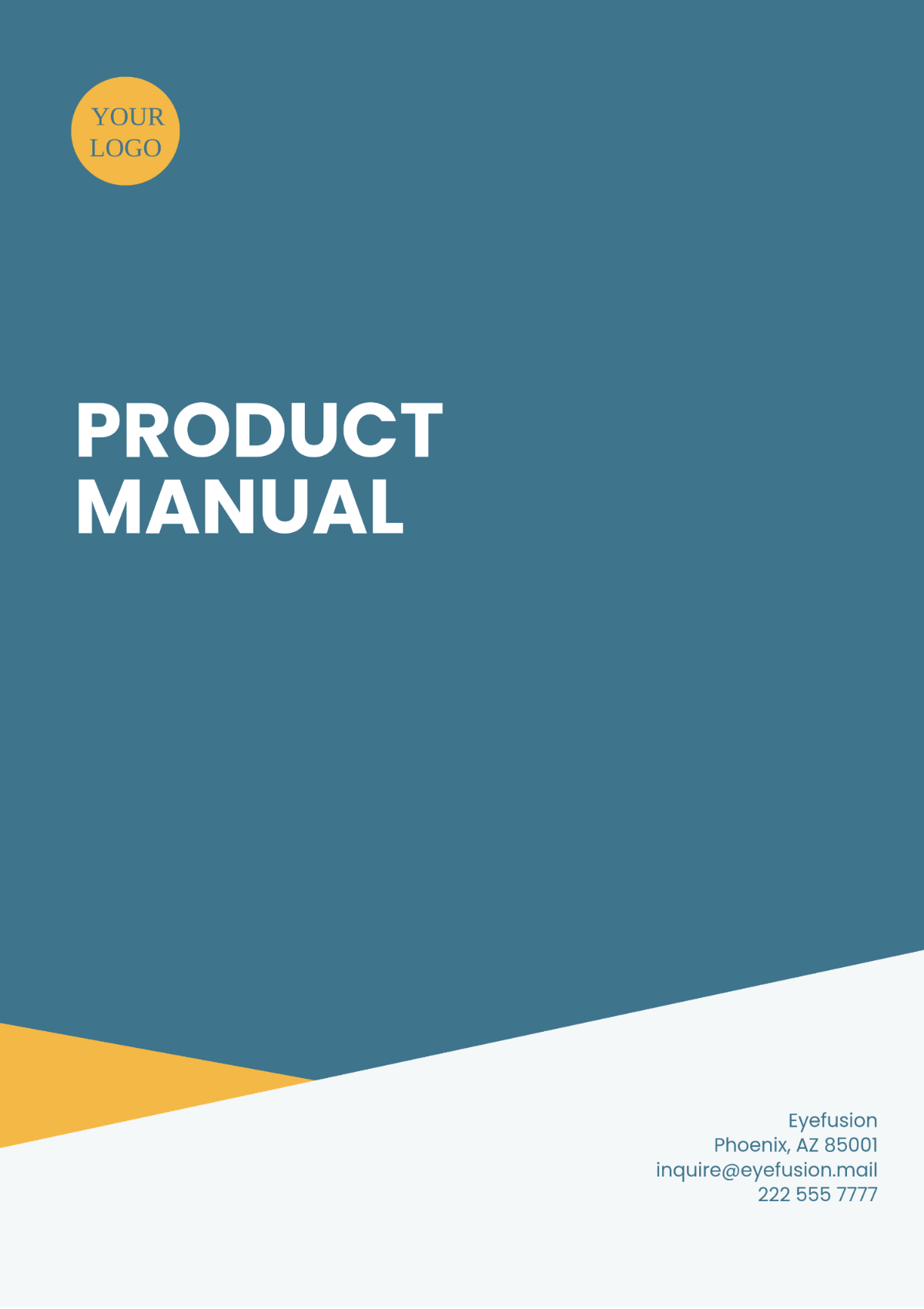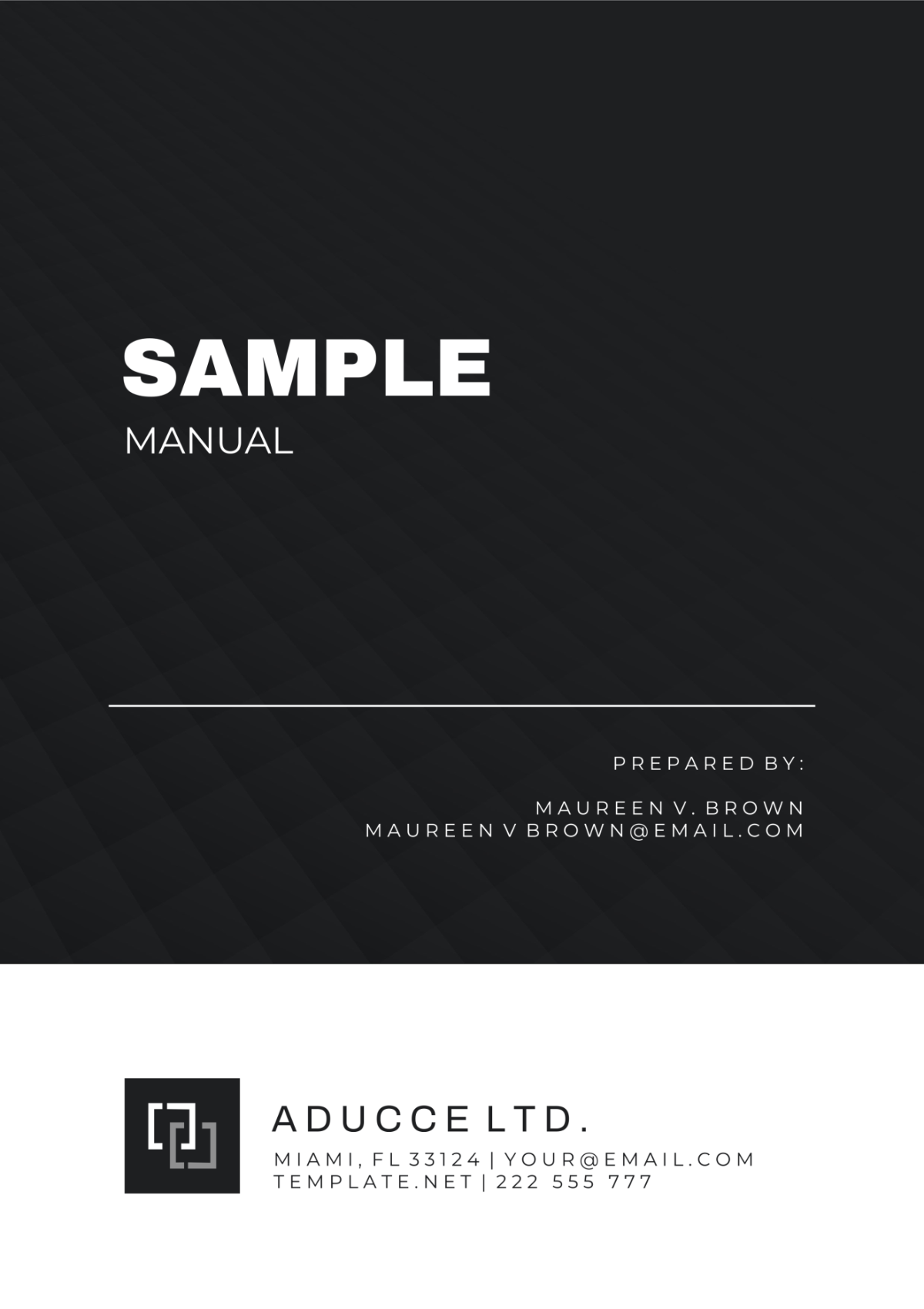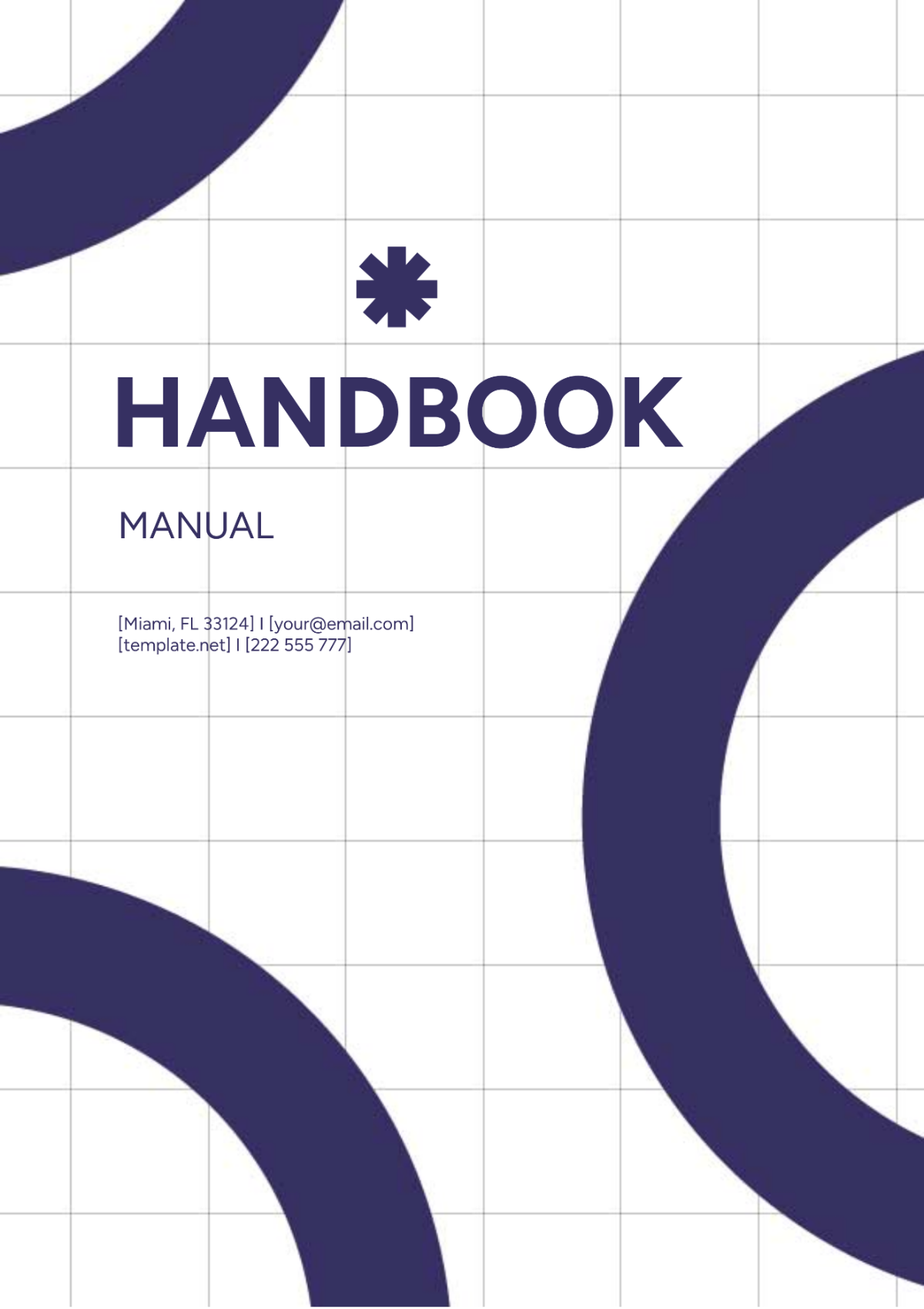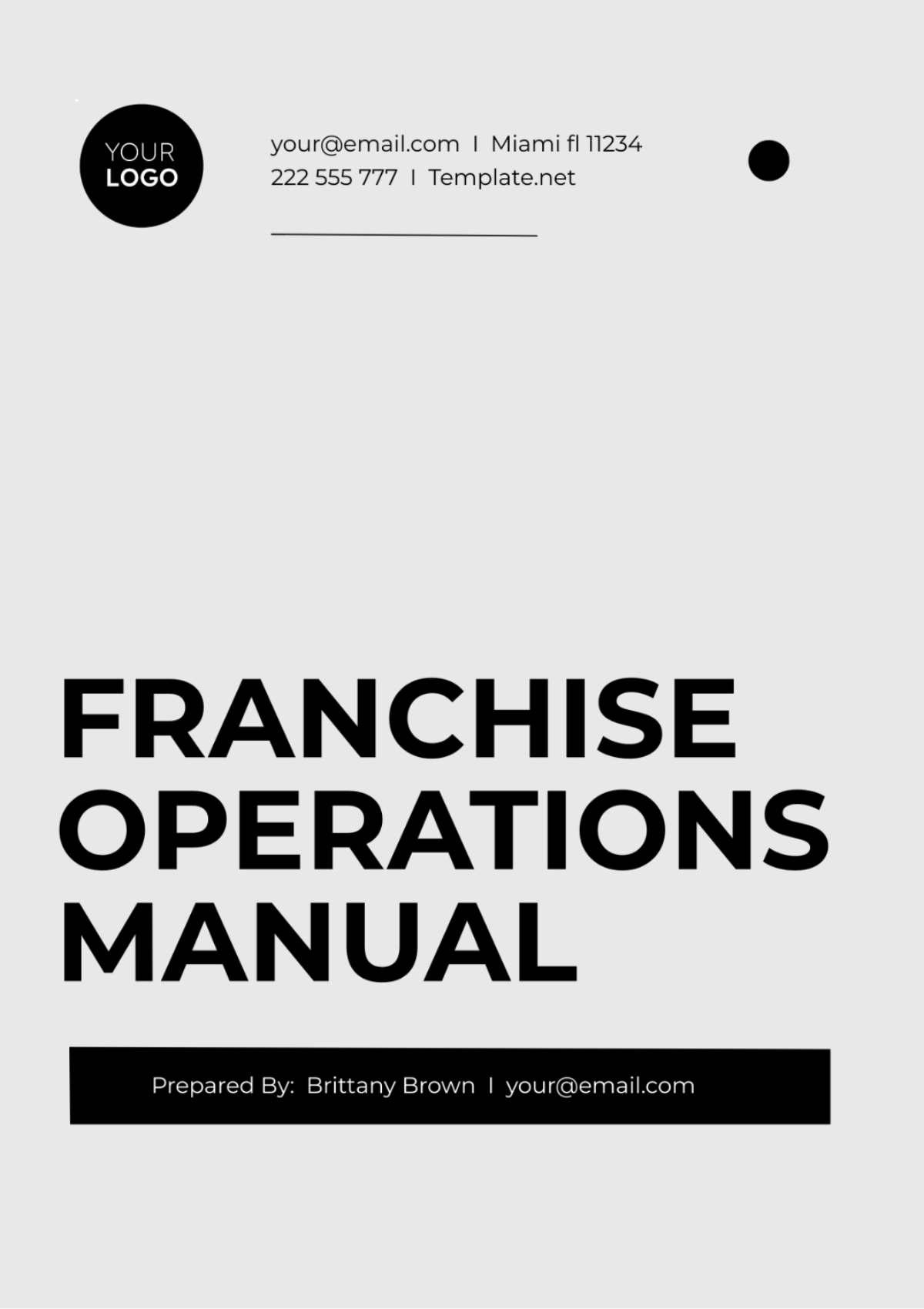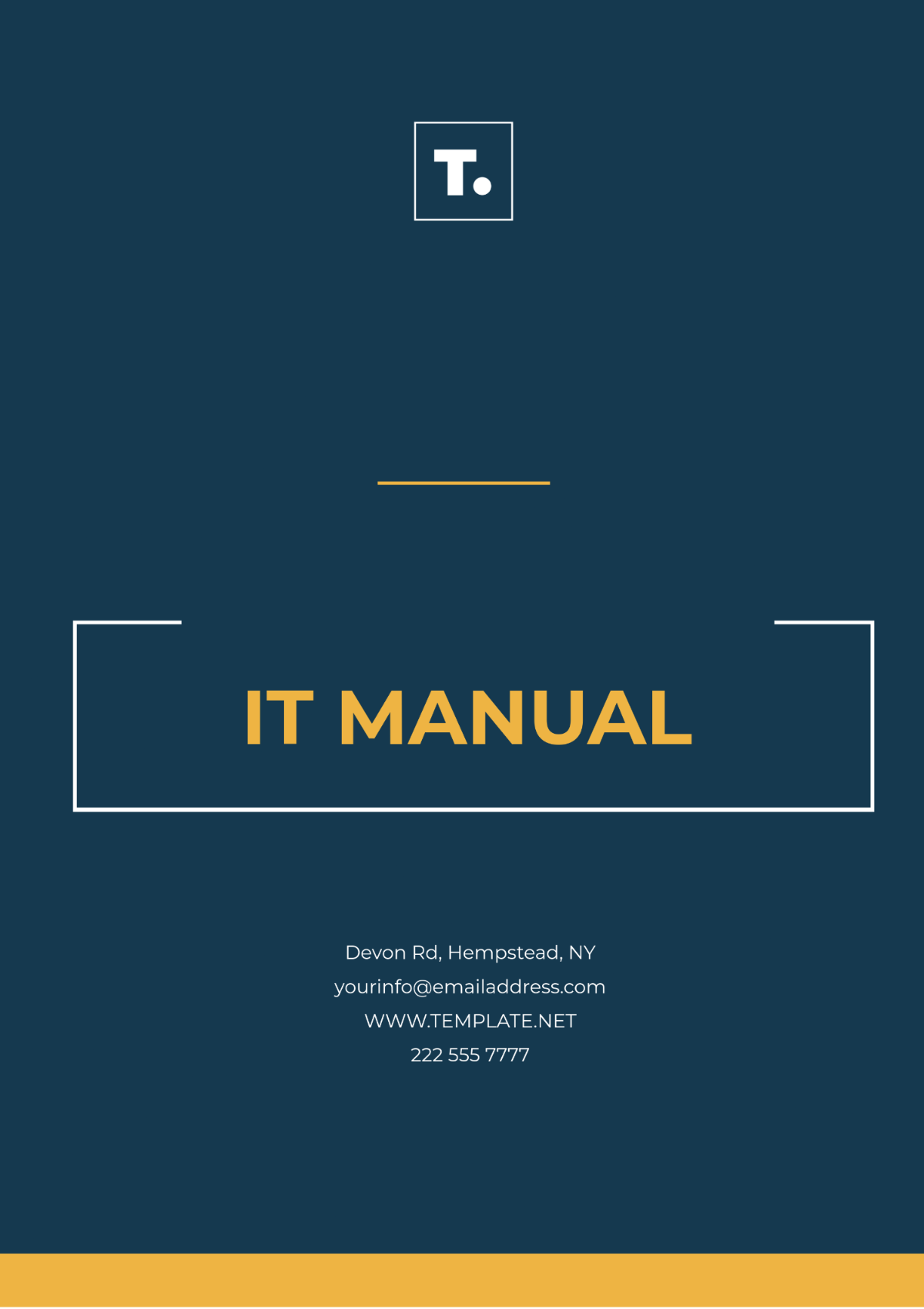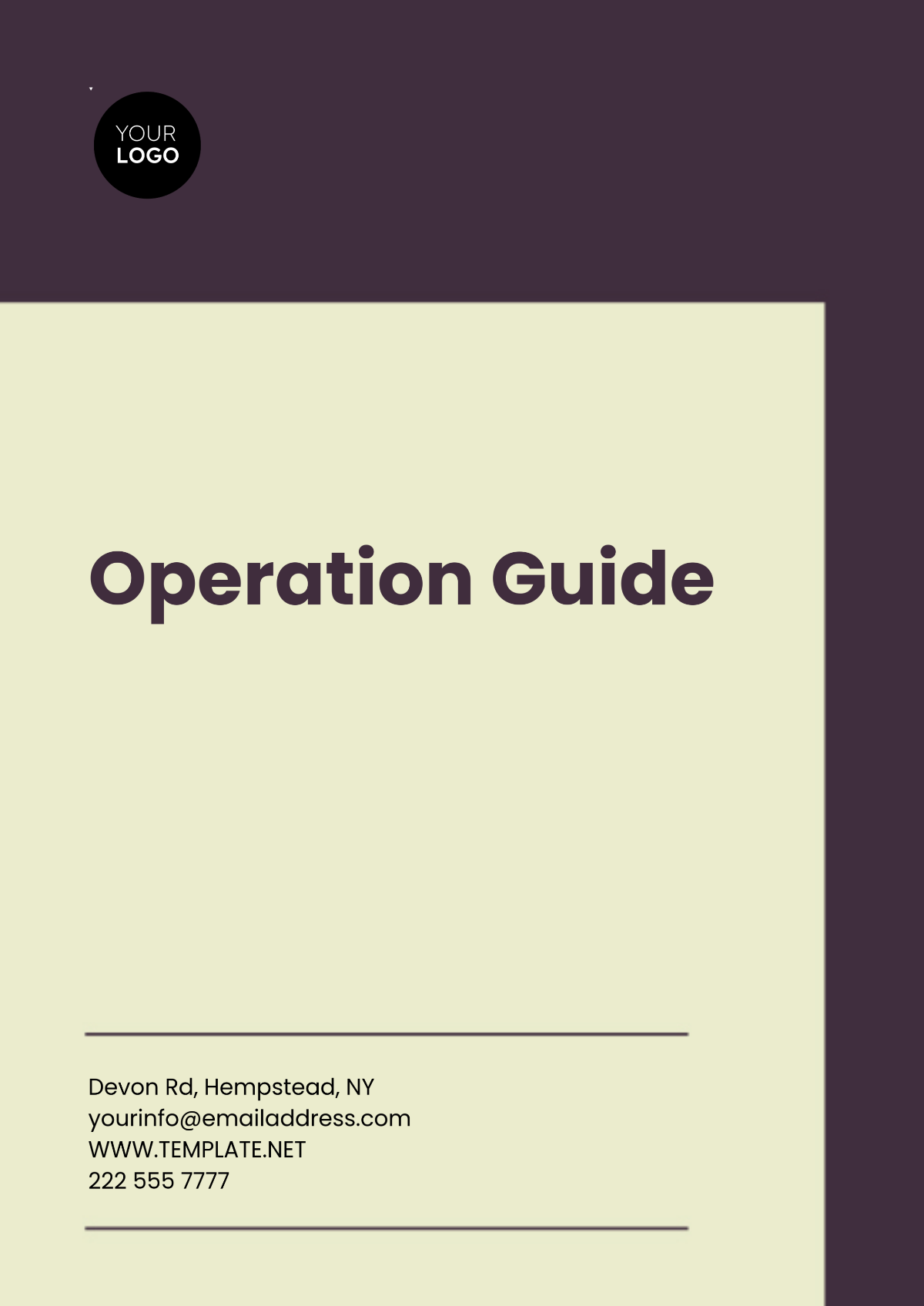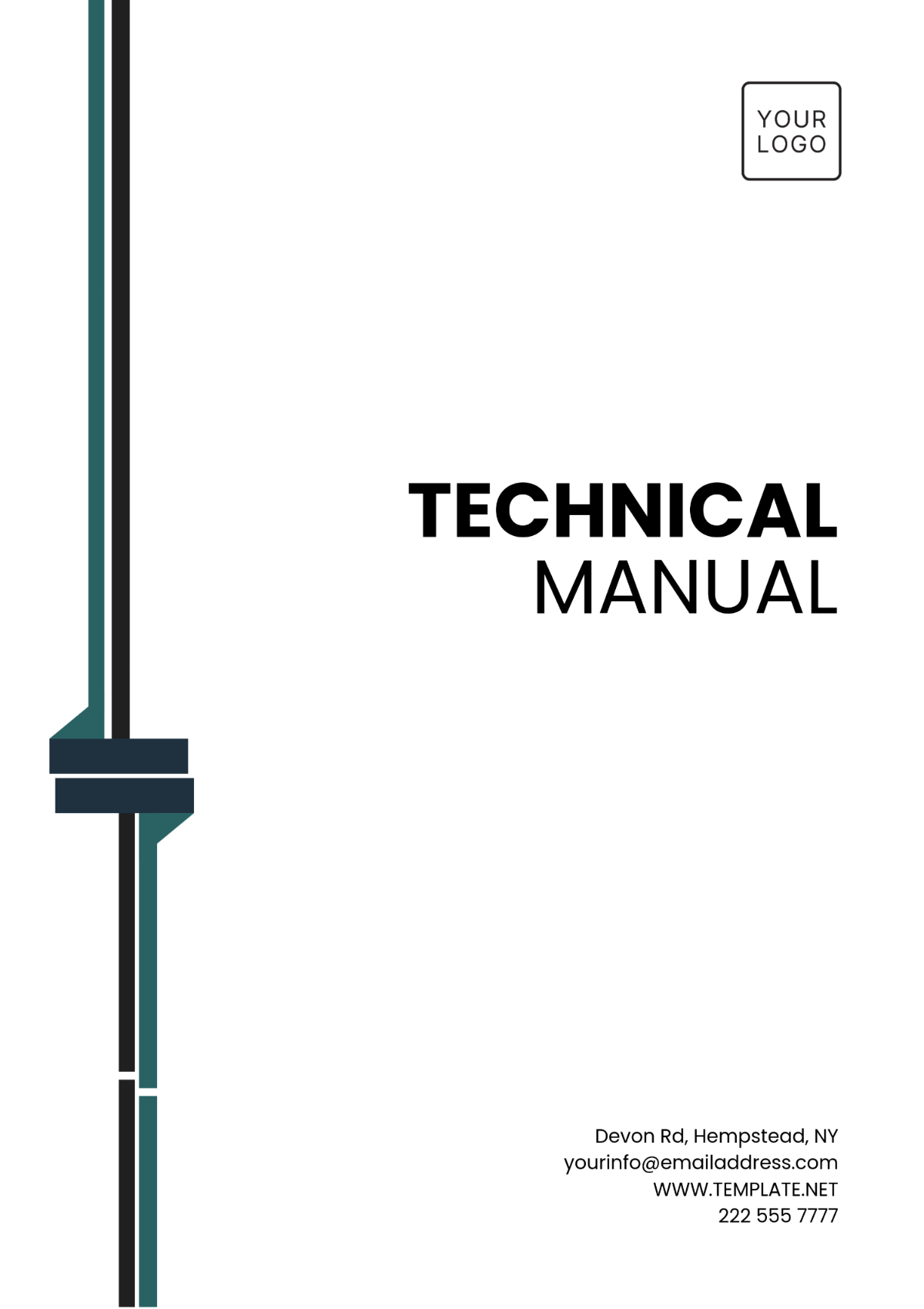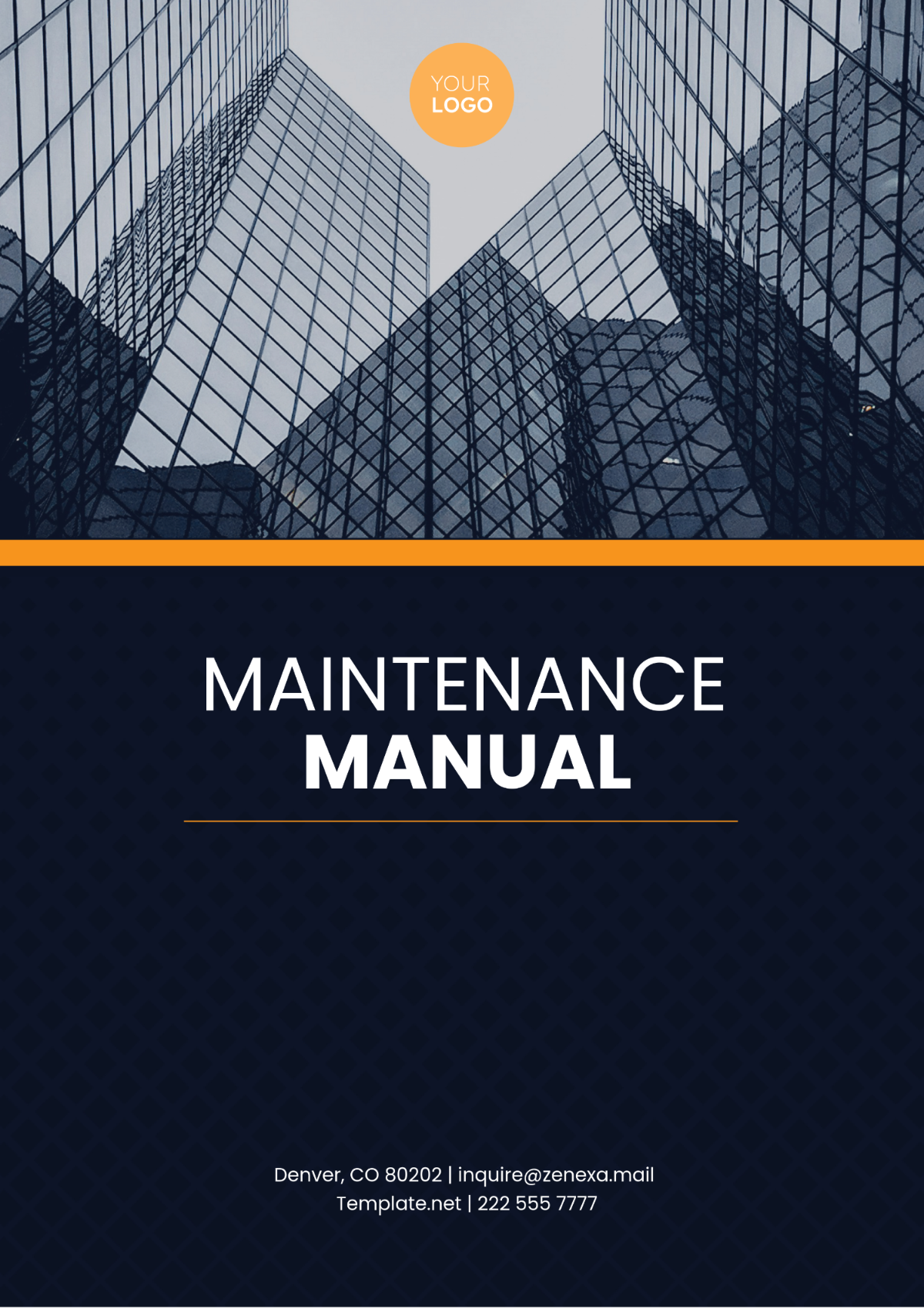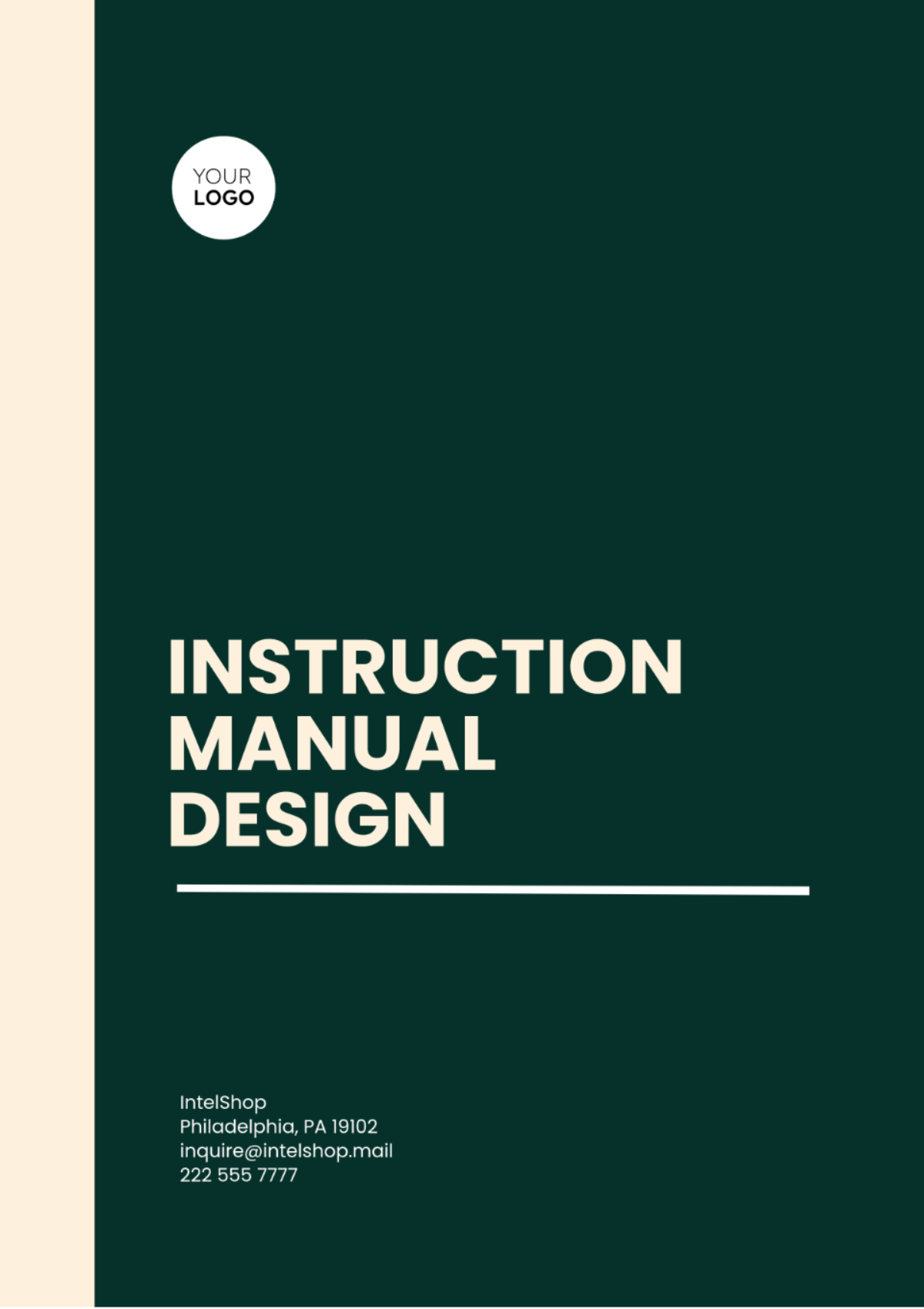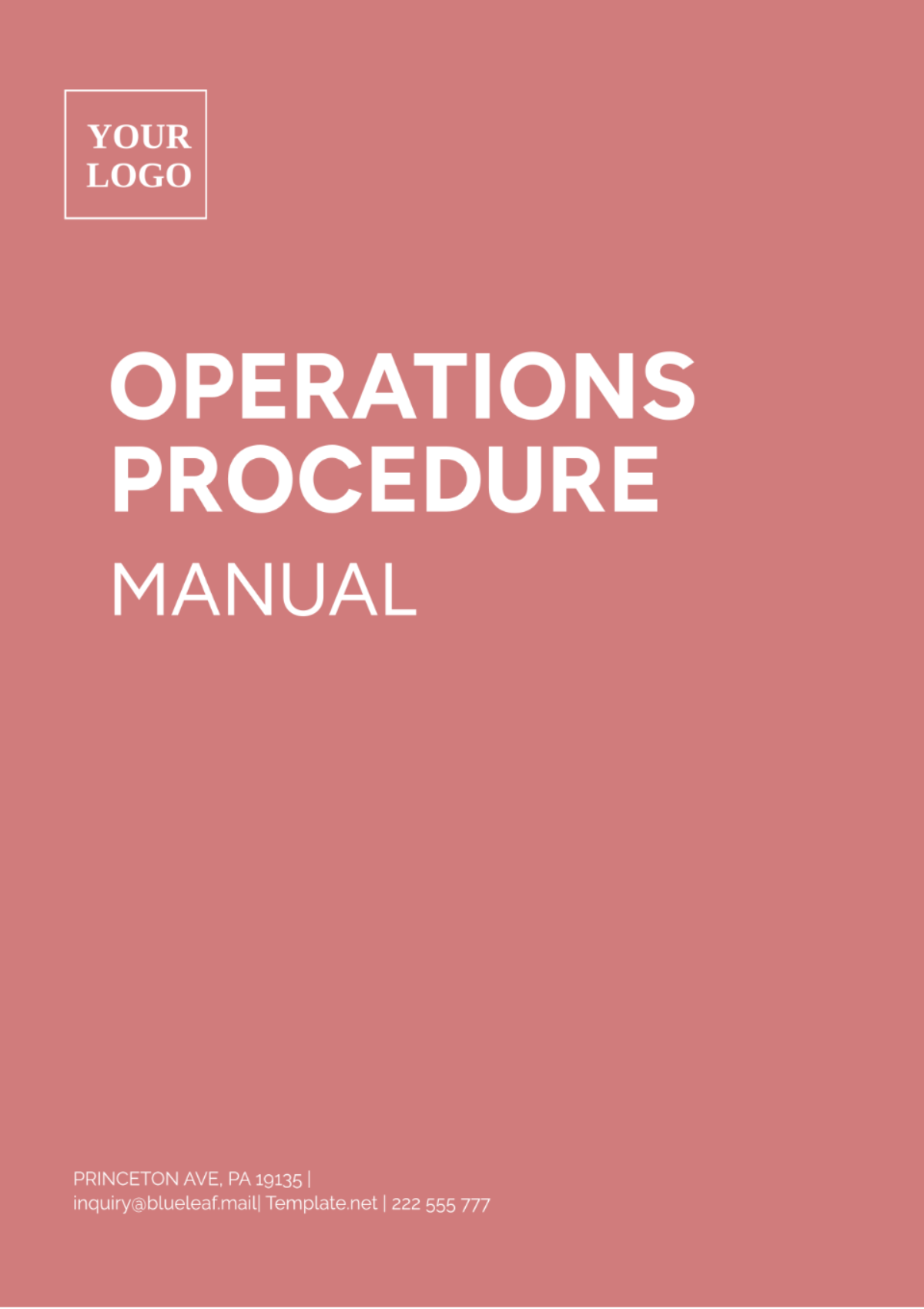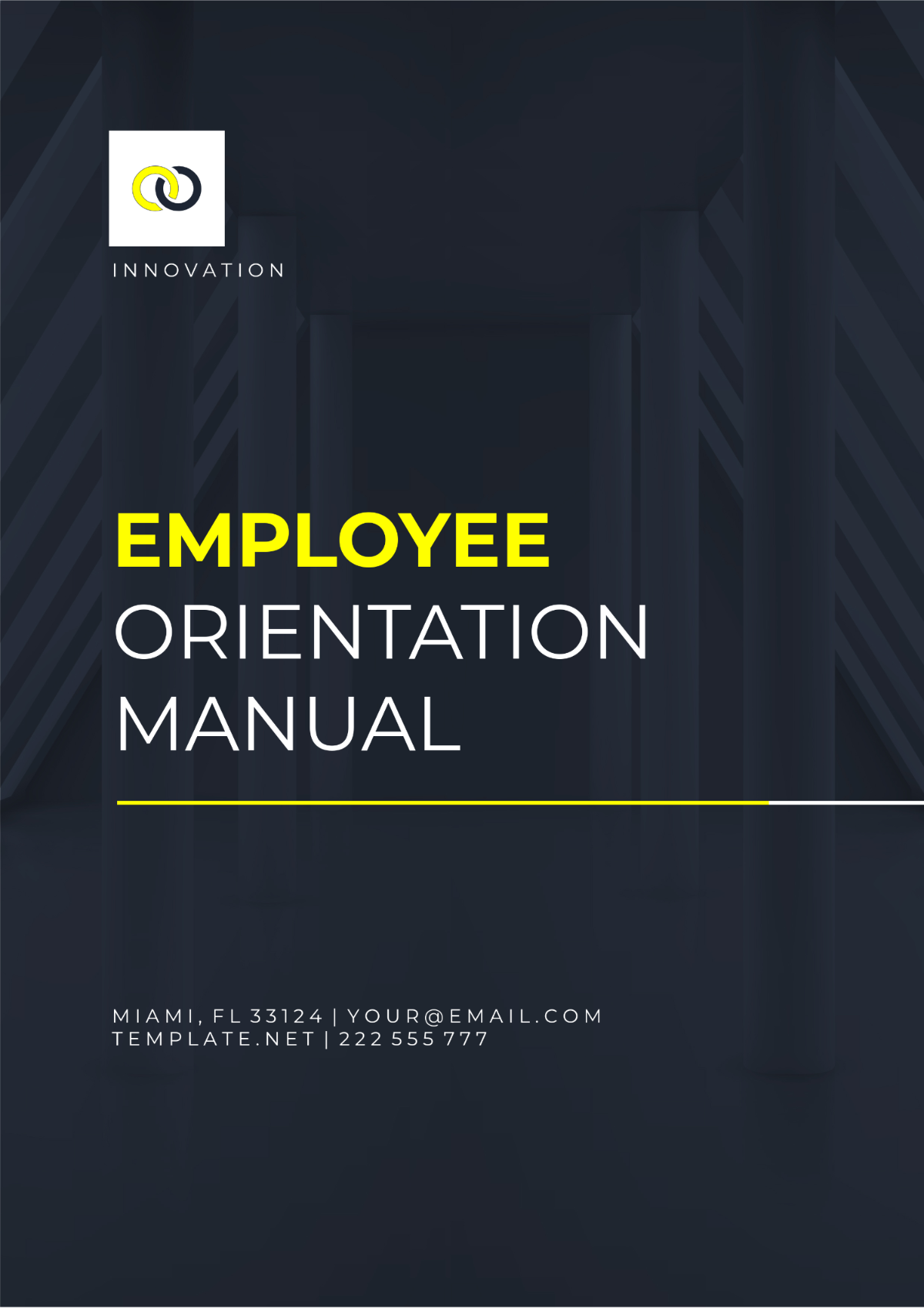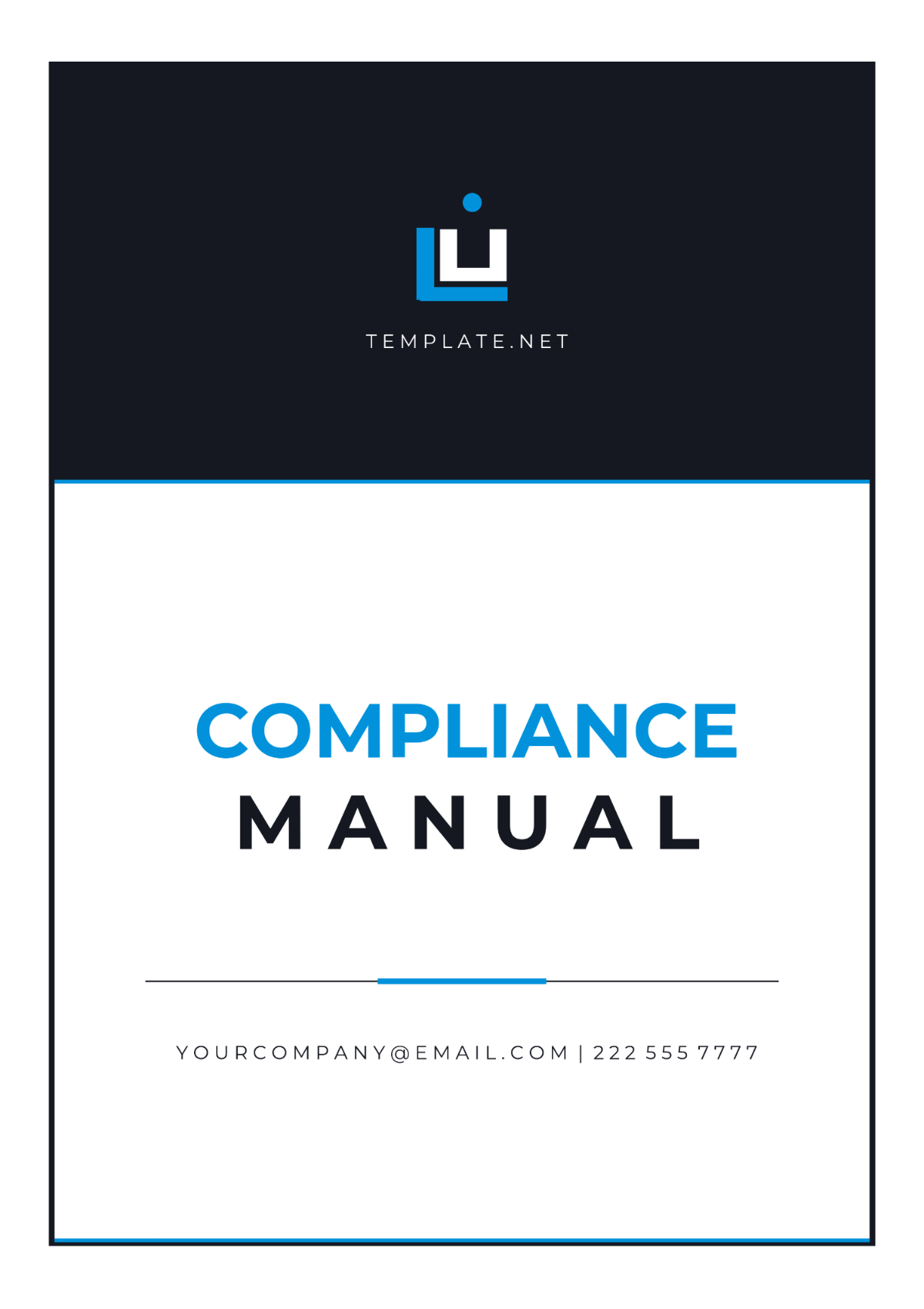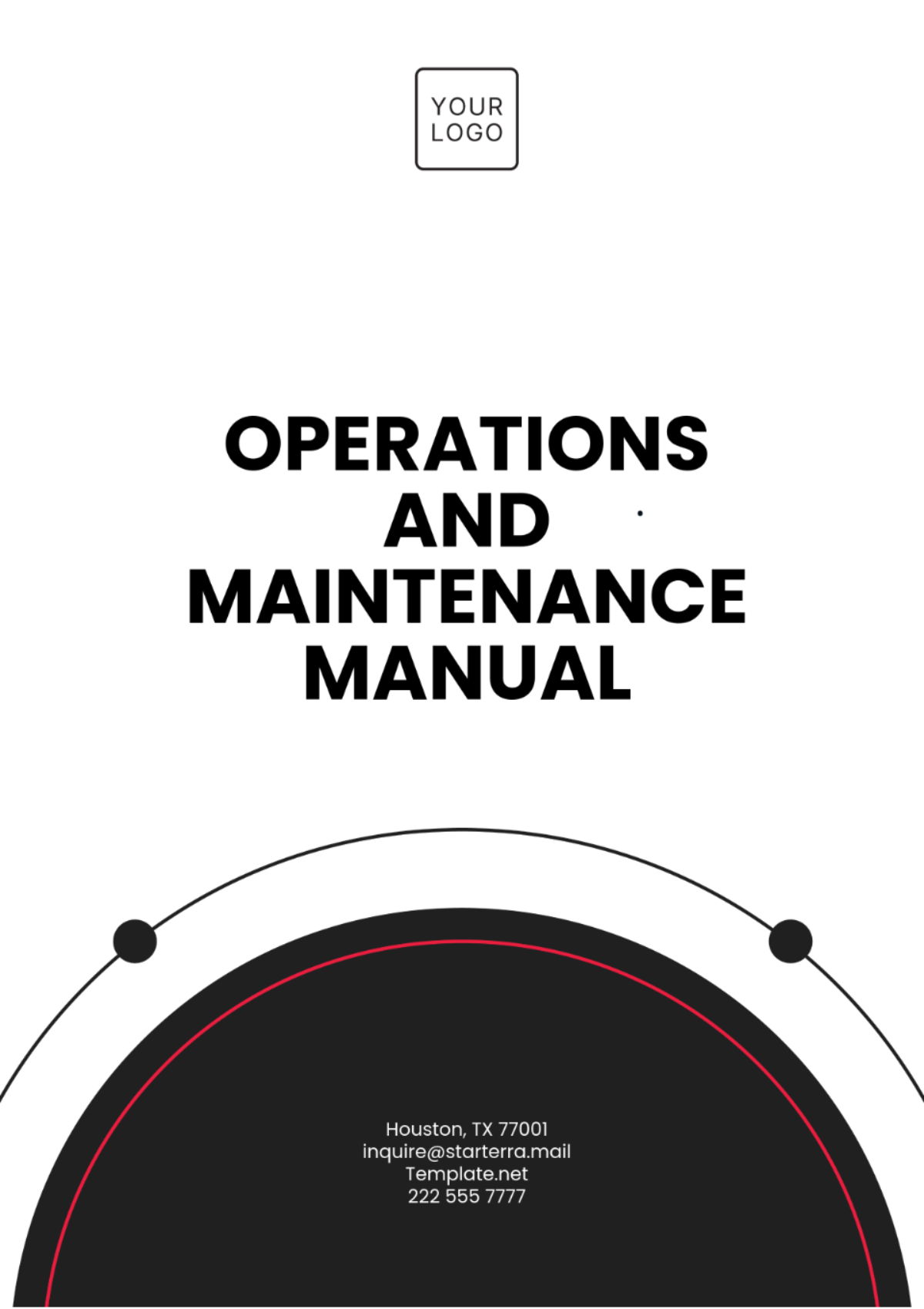Free Agriculture Quality Control Manual
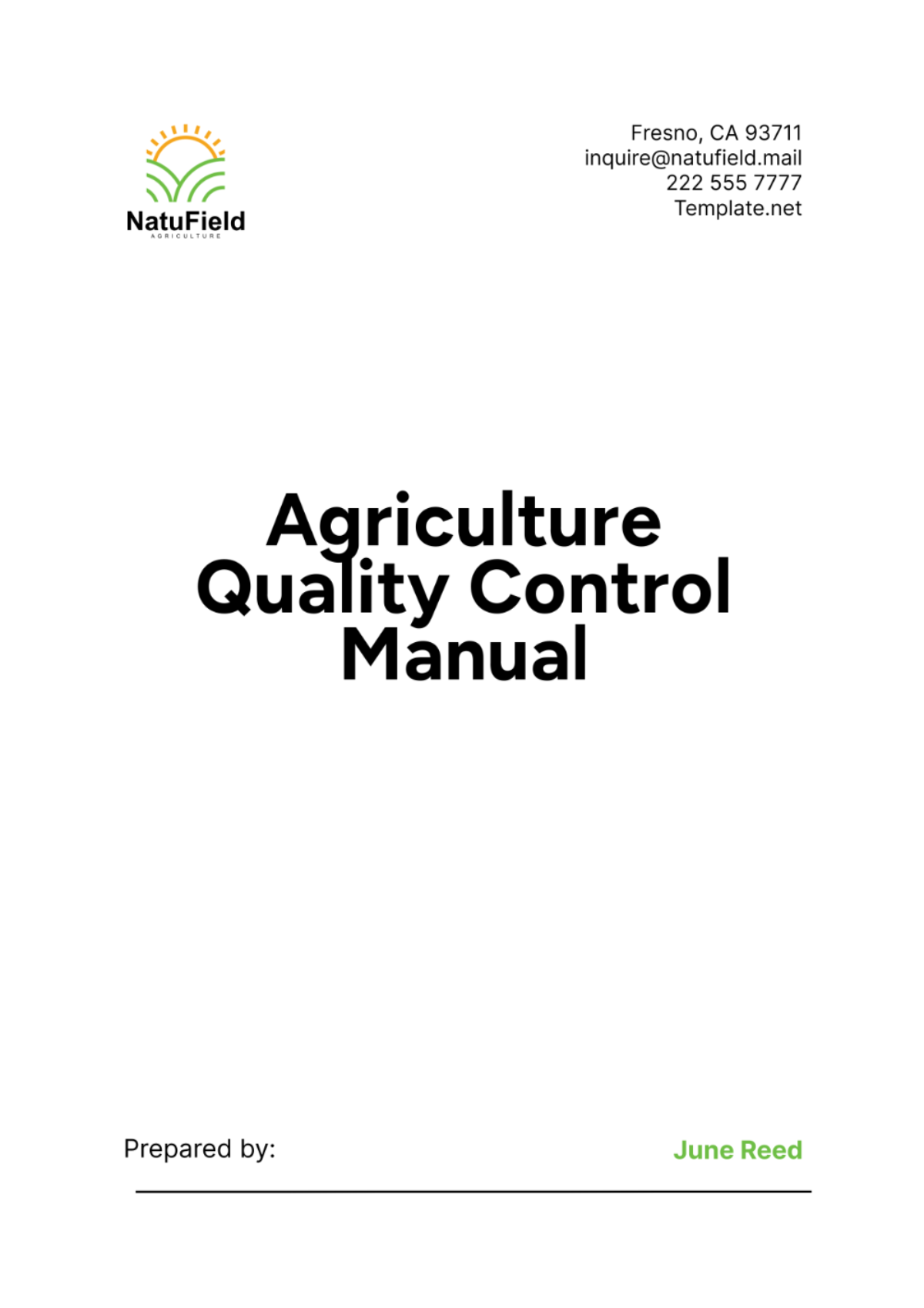
- 100% Customizable, free editor
- Access 1 Million+ Templates, photo’s & graphics
- Download or share as a template
- Click and replace photos, graphics, text, backgrounds
- Resize, crop, AI write & more
- Access advanced editor
Discover the Agriculture Quality Control Manual Template from Template.net—your ultimate solution for maintaining high standards in the agricultural sector. This fully editable and customizable template is designed specifically for the Marketing Industry and Professionals. Experience seamless editing in our AI Editor Tool and elevate your documentation process effortlessly. Enhance efficiency and ensure excellence in quality control now!
You may also like
Agriculture Quality Control Manual
I. Introduction
A. Purpose
The Agriculture Quality Control Manual is essential for upholding rigorous standards across all facets of our agricultural operations. Its primary purpose is to ensure that every stage of production—from soil preparation to post-harvest handling—is executed with meticulous attention to quality and safety. By adhering strictly to the guidelines laid out in this manual, we aim to consistently deliver products that meet and exceed regulatory requirements and customer expectations.
B. Scope
This comprehensive manual encompasses a wide array of critical processes essential to our operations. It begins with detailed protocols for monitoring and enhancing soil health, ensuring optimal conditions for crop growth. It then addresses the management of crop quality, offering guidelines on planting techniques, irrigation methods, and integrated pest management strategies. Furthermore, the manual covers best practices for harvesting procedures, emphasizing efficiency and minimal product loss. Post-harvest, it provides meticulous instructions for the handling and storage of produce to preserve freshness, flavor, and nutritional integrity. Additionally, the manual includes protocols for equipment maintenance and sanitation, crucial for preventing cross-contamination and ensuring the longevity of our agricultural machinery.
C. Responsibility
Every member of our team bears the responsibility of adhering strictly to the standards outlined in this manual. From field workers to management, each role plays a pivotal part in maintaining the integrity and safety of our agricultural products. By understanding and implementing these guidelines diligently, we collectively uphold our commitment to quality assurance and consumer trust. Regular training and updates ensure that all team members are well-versed in the protocols, fostering a culture of excellence and continuous improvement throughout [Your Company Name].
II. Soil Health Monitoring
Soil health monitoring is critical to ensuring optimal crop growth and yield in our agricultural operations. This section of the Agriculture Quality Control Manual provides detailed procedures for soil testing, fertilizer application, and organic matter management to maintain nutrient balance and enhance soil fertility sustainably.
A. Soil Testing Procedures
Regular soil testing ensures nutrient levels are adequate for optimal crop growth.
Procedure | Description |
|---|---|
Sampling Method | Use a grid or zigzag pattern to collect composite soil samples from multiple depths (0-6 inches, 6-12 inches) and areas across the field. Label and mix samples thoroughly before sending them to accredited laboratories for analysis. |
Testing Frequency | Conduct soil tests annually before planting season and during key growth stages like flowering and fruiting. Perform additional tests if there are signs of nutrient deficiencies or soil degradation. |
Nutrient Analysis | Analyze soil samples for pH levels (optimal range 6.0-7.0), nitrogen (N), phosphorus (P), potassium (K), calcium, magnesium, sulfur, and micronutrients like zinc and boron. Use standardized methods such as Mehlich-3 or Bray for reliable results. |
B. Fertilizer Application
Apply fertilizers based on soil test results to maintain nutrient balance.
Procedure | Description |
|---|---|
Soil Test Interpretation | Interpret soil test results to determine specific nutrient deficiencies (e.g., low nitrogen) or excesses (e.g., high phosphorus) that may affect crop growth. Adjust fertilizer types (e.g., ammonium nitrate, triple superphosphate) and application rates accordingly. |
Application Rates | Calculate fertilizer application rates based on crop nutrient requirements and soil analysis results. For example, apply 100 lbs of nitrogen per acre for corn based on soil test recommendations and crop yield goals. |
Timing | Apply fertilizers during periods of active plant growth to maximize nutrient uptake, such as pre-planting or side-dressing during critical growth stages like tillering or fruit set. Avoid application during heavy rainfall to minimize runoff and nutrient leaching. |
Application Methods | Choose broadcast spreading for uniform coverage or banding for concentrated application near plant roots. Consider split applications for prolonged nutrient availability and reduced environmental impact. |
C. Organic Matter Management
Incorporate organic matter to improve soil structure and health.
Procedure | Description |
|---|---|
Composting | Create compost piles with a mix of carbon-rich (straw, sawdust) and nitrogen-rich (manure, green plant material) ingredients in a 25:1 ratio. Turn compost every 2-3 weeks to aerate and maintain moisture levels for optimal decomposition. |
Cover Cropping | Plant winter rye or clover after harvest to suppress weeds, fix nitrogen in the soil, and improve soil structure. Incorporate cover crops into the soil before they flower to release nutrients and prevent competition with cash crops. |
Incorporation | Till cover crops or compost into the soil using a disc or rotary tiller to improve soil organic matter content and microbial activity. Perform shallow tillage to avoid disturbing soil structure and reduce erosion risks. |
III. Crop Quality Management
Crop quality management is crucial for maximizing yields and ensuring consistent product standards in our agricultural operations. This section of the Agriculture Quality Control Manual provides comprehensive procedures for seed selection, planting techniques, and growth monitoring to promote robust crop development and mitigate risks effectively.
A. Seed Selection
Select high-quality seeds that are disease-resistant and suitable for local conditions.
Procedure | Description |
|---|---|
Variety Research | Research seed varieties suited to local climate, soil types, and pest resistance. Consider traits like yield potential, disease resistance (e.g., resistant to common pests like aphids or diseases like blight), and adaptability to environmental stressors. |
Quality Assurance | Source seeds from reputable suppliers with proven track records for high-quality and disease-free seeds. Perform germination tests to assess seed viability and ensure uniformity in seedling emergence. Conduct seed health tests to verify absence of pathogens. |
Storage Conditions | Store seeds in cool, dry conditions to maintain viability and prevent mold or pest infestations. Use proper containers or packaging to protect seeds from moisture and fluctuations in temperature. Label seeds clearly with variety and purchase date for traceability. |
B. Planting Techniques
Employ proper planting techniques to ensure uniform growth and minimize stress on plants.
Procedure | Description |
|---|---|
Seedbed Preparation | Prepare seedbeds by cultivating soil to a depth of 4-6 inches to create a loose, well-aerated seedbed. Incorporate organic matter or compost to improve soil structure and fertility. Remove weeds and debris to reduce competition for nutrients and water. |
Planting Depth and Spacing | Plant seeds at optimal depths and spacing recommended for each crop type to promote uniform emergence and minimize crowding. Adjust planting depth based on soil moisture and temperature conditions. Use precision planting equipment to ensure accurate seed placement. |
Climate Considerations | Consider local weather patterns and soil moisture levels when scheduling planting to minimize stress on emerging seedlings. Monitor weather forecasts for potential adverse conditions and implement protective measures as needed, such as row covers or irrigation adjustments. |
C. Growth Monitoring
Regularly monitor crop growth and address any issues promptly.
Procedure | Description |
|---|---|
Phenological Tracking | Monitor crop growth stages using established growth models or field observations. Track key growth milestones such as emergence, flowering, and fruit set to optimize timing of management practices like irrigation and fertilization. Record observations systematically to track crop progress over time. |
Pest and Disease Surveillance | Implement regular scouting to detect early signs of pests, diseases, or nutrient deficiencies. Use integrated pest management (IPM) strategies to minimize pesticide use and promote natural pest control methods. Maintain accurate records of pest populations and treatment applications. |
Irrigation and Nutrient Management | Monitor soil moisture levels using soil sensors or moisture probes to determine optimal irrigation schedules. Adjust irrigation practices based on crop water needs, weather conditions, and soil type. Conduct regular soil tests to assess nutrient levels and adjust fertilizer applications to meet crop requirements throughout the growing season. |
These detailed procedures ensure that crop quality is consistently monitored and optimized, contributing to sustainable agricultural practices and ensuring high-quality yields at [Your Company Name].
IV. Pest Control
Pest control is essential for safeguarding crop health and ensuring high yields in our agricultural operations. This section of the Agriculture Quality Control Manual outlines comprehensive strategies for integrated pest management (IPM), pesticide application, and biological control to effectively manage pest populations while minimizing environmental impact.
A. Integrated Pest Management (IPM)
Use IPM strategies to minimize pest damage while reducing chemical use.
Procedure | Description |
|---|---|
Pest Identification | Identify and monitor pest populations through regular scouting and monitoring. Use field guides or consult with agronomists to accurately identify pests and assess population levels. |
Cultural Control | Implement cultural practices such as crop rotation, planting resistant varieties, and adjusting planting dates to disrupt pest life cycles and reduce pest pressure. Maintain optimal plant health through proper irrigation and nutrition. |
Mechanical Control | Use physical barriers like row covers or traps to exclude pests from crops or physically remove pests through hand-picking or vacuuming in small-scale operations. |
Chemical Control | Employ pesticides selectively and judiciously as a last resort, choosing products with low environmental impact and applying them according to label instructions and local regulations. |
B. Pesticide Application
Apply pesticides according to label instructions and safety guidelines.
Procedure | Description |
|---|---|
Product Selection | Choose pesticides based on pest type, crop stage, and environmental considerations. Prioritize products with low toxicity to beneficial organisms and minimal residual effects. |
Application Timing | Apply pesticides during periods of pest vulnerability, such as early morning or late evening to minimize exposure to beneficial insects and pollinators. Avoid application during windy conditions to prevent drift. |
Equipment Calibration | Calibrate spray equipment regularly to ensure accurate application rates and uniform coverage. Monitor weather conditions and adjust application parameters accordingly to optimize efficacy and minimize environmental impact. |
Safety Precautions | Adhere strictly to safety guidelines, wear appropriate personal protective equipment (PPE), and follow pesticide label instructions for handling, mixing, and disposal. Maintain records of pesticide use for traceability and compliance purposes. |
C. Biological Control
Utilize beneficial organisms to control pest populations naturally.
Procedure | Description |
|---|---|
Beneficial Organism Selection | Identify and introduce natural enemies like predatory insects, parasitoids, or beneficial nematodes that target specific pests without harming crops or beneficial organisms. |
Habitat Manipulation | Create habitats that support beneficial organisms, such as flowering plants for pollinators or shelter for predatory insects. Implement crop diversification to enhance natural pest control and biodiversity. |
Monitoring and Evaluation | Monitor effectiveness of biological control agents through regular observation of pest and beneficial organism populations. Adjust management practices based on monitoring results to optimize pest control strategies. |
These detailed procedures ensure that pest control measures are implemented effectively, promoting sustainable agriculture practices and safeguarding crop quality and productivity at [Your Company Name].
V. Harvesting Best Practices
Harvesting crops at peak ripeness and ensuring careful handling are crucial for maintaining high quality and maximizing marketability. This section of the Agriculture Quality Control Manual provides detailed procedures for timing of harvest, harvesting techniques, and post-harvest handling to preserve crop integrity and quality throughout the process.
A. Timing of Harvest
Harvest crops at the peak of ripeness to ensure maximum quality.
Procedure | Description |
|---|---|
Ripeness Assessment | Assess crop maturity using multiple indicators such as color, size, firmness, and sugar content. For example, harvest tomatoes when they are fully red and slightly firm to touch, indicating optimal ripeness for flavor and shelf life. |
Harvest Planning | Plan harvest schedules based on crop-specific maturity timelines and market demands. Coordinate with farm managers and logistics teams to optimize efficiency and reduce delays. Example: Schedule peach harvest early in the morning to minimize heat stress and preserve fruit quality. |
Weather Monitoring | Monitor weather forecasts closely to avoid harvesting during adverse conditions such as rain or extreme heat, which can affect crop quality and shelf life. Utilize weather apps or on-site weather stations for real-time updates. |
B. Harvesting Techniques
Use proper techniques to minimize damage and contamination.
Procedure | Description |
|---|---|
Tools and Equipment | Select appropriate harvesting tools such as sharp pruning shears for delicate crops like berries or mechanical harvesters for large-scale grain harvesting. Ensure tools are sanitized to prevent contamination and maintain product quality. Example: Use grape harvesters equipped with gentle shaking mechanisms to detach fruit clusters without damaging vines. |
Handling Practices | Train harvest crew members in proper handling techniques to minimize bruising and damage. Emphasize gentle handling during manual harvesting and utilize cushioned containers or bins for transport. Example: For lettuce, gently lift heads from the ground, avoiding excessive squeezing or dropping, to preserve crispness and appearance. |
C. Post-Harvest Handling
Handle harvested crops carefully to maintain integrity and quality.
Procedure | Description |
|---|---|
Immediate Cooling | Immediately cool harvested crops using methods such as forced air cooling or hydrocooling to remove field heat and slow down respiration. Example: Use hydrocooling for leafy greens by immersing them in chilled water to quickly lower temperature and maintain crispness. |
Storage Conditions | Store crops in climate-controlled environments with proper humidity and ventilation to extend shelf life and preserve quality. Monitor storage conditions regularly using digital sensors or manual checks to prevent spoilage. Example: Store apples in cold storage at temperatures near 32°F (0°C) with high humidity to maintain firmness and prevent shriveling. |
Packaging and Transport | Pack crops carefully in clean, durable packaging that protects against physical damage and contamination during transport. Label packages with harvest date, variety, and handling instructions for traceability and consumer information. Example: Package strawberries in ventilated clamshell containers lined with soft padding to prevent crushing and allow airflow, extending shelf life and maintaining appearance. |
By implementing these comprehensive practices, [Your Company Name] ensures that harvested crops maintain peak quality and freshness from field to market, meeting consumer expectations and enhancing market competitiveness.
VI. Produce Handling and Storage
Proper handling and storage of produce are critical to preserving quality and maximizing shelf life. This section of the Agriculture Quality Control Manual outlines essential procedures for sorting and grading, maintaining optimal storage conditions, and ensuring proper transportation to safeguard produce integrity throughout the supply chain.
A. Sorting and Grading
Procedure | Description |
|---|---|
Visual Inspection | Inspect produce visually for size, shape, color, and external defects such as bruising or discoloration. Sort fruits and vegetables into different grades based on visual appearance and market standards. Example: Grade apples into Extra Fancy, Fancy, and Utility categories based on size, color, and blemishes. |
Quality Parameters | Use quality parameters such as sugar content (Brix level), acidity, and firmness to assess internal quality of produce. Utilize handheld devices or laboratory tests for objective measurements. Example: Use a refractometer to measure sugar content in melons to determine sweetness and ripeness level. |
Grading Standards | Adhere to industry grading standards such as USDA grades or internal company standards to classify produce based on quality attributes. Train staff on grading criteria to ensure consistency and accuracy in grading practices. Example: Grade tomatoes according to USDA standards for color, firmness, and uniformity of size to meet market requirements. |
B. Storage Conditions
Procedure | Description |
|---|---|
Temperature Management | Maintain consistent temperatures specific to each type of produce to slow down respiration and reduce spoilage. Use refrigerated storage or controlled atmosphere (CA) storage for perishable items like berries or leafy greens. Example: Store strawberries at 32°F (0°C) to extend shelf life and preserve flavor and texture. |
Humidity Control | Control humidity levels in storage facilities to prevent wilting, mold growth, and dehydration. Use humidifiers or dehumidifiers as needed to maintain optimal conditions. Example: Maintain high humidity (90-95%) for mushrooms to prevent drying out and maintain freshness. |
Ethylene Management | Manage ethylene gas levels, a natural plant hormone, to prevent premature ripening and spoilage of ethylene-sensitive produce. Use ethylene scrubbers or inhibitors to regulate ethylene concentration. Example: Store apples separately from ethylene-producing fruits like bananas to prevent accelerated ripening and flavor changes. |
C. Transportation
Procedure | Description |
|---|---|
Packaging Requirements | Use durable and ventilated packaging materials to protect produce from physical damage and maintain airflow during transportation. Label packages with handling instructions and temperature requirements for transporters. Example: Package leafy greens in perforated plastic bags to maintain freshness and allow for respiration during transit. |
Temperature Monitoring | Monitor and record temperature conditions during transportation using data loggers or temperature-sensitive labels. Ensure transport vehicles are equipped with refrigeration units to maintain consistent temperatures. Example: Transport citrus fruits in refrigerated trucks with temperature setpoints to prevent chilling injury and maintain fruit quality. |
Handling Practices | Train transport personnel in proper handling techniques to minimize impact and vibration during loading and unloading. Implement FIFO (First In, First Out) practices to manage inventory and reduce storage time during transit. Example: Handle delicate fruits like peaches with care to prevent bruising or damage that could lead to spoilage or quality degradation. |
By following these comprehensive procedures, [Your Company Name] ensures that produce maintains optimal quality and freshness throughout handling, storage, and transportation, meeting market demands and consumer expectations effectively.
VII. Equipment Maintenance and Sanitation
Maintaining equipment in optimal condition and ensuring strict sanitation protocols are essential for operational efficiency and product safety in our agricultural operations. This section of the Agriculture Quality Control Manual provides detailed procedures for implementing regular maintenance schedules, sanitation procedures, and equipment inspections to uphold high standards of cleanliness and functionality.
A. Regular Maintenance Schedule
Procedure | Description |
|---|---|
Maintenance Planning | Develop a comprehensive maintenance schedule outlining routine tasks such as lubrication, calibration, and part replacements based on manufacturer recommendations and operational usage. Example: Schedule monthly inspections for combine harvesters to check engine oil levels, clean air filters, and adjust belt tension for optimal performance. |
Preventive Maintenance | Conduct preventive maintenance tasks to preemptively address potential equipment failures and extend lifespan. Keep detailed records of maintenance activities and equipment history for traceability and warranty purposes. Example: Replace irrigation system filters every 3 months to prevent clogging and ensure consistent water flow to crops. |
Emergency Response | Establish protocols for responding to equipment breakdowns or malfunctions promptly. Maintain a supply of spare parts and emergency repair kits onsite to minimize downtime during critical operations. Example: Train maintenance staff in troubleshooting techniques to diagnose and resolve issues quickly, reducing production delays. |
B. Sanitation Procedures
Procedure | Description |
|---|---|
Cleaning Protocols | Develop cleaning protocols specifying cleaning agents, procedures, and frequencies for different types of equipment. Ensure all cleaning materials are food-safe and approved for agricultural use. Example: Use a diluted bleach solution to sanitize pruning shears and other cutting tools between each use to prevent disease spread in orchards. |
Disinfection Practices | Implement disinfection practices to eliminate pathogens and reduce contamination risks. Focus on high-touch surfaces and critical control points to maintain hygienic conditions throughout production areas. Example: Disinfect packaging conveyors with approved sanitizers before and after each use to prevent cross-contamination of produce. |
Validation and Verification | Validate effectiveness of sanitation procedures through regular testing and verification of cleanliness standards. Use ATP (Adenosine Triphosphate) swab tests or visual inspections to ensure surfaces are free from organic residues and pathogens. Example: Conduct weekly swab tests on processing equipment surfaces to verify sanitation effectiveness and compliance with food safety regulations. |
C. Equipment Inspection
Procedure | Description |
|---|---|
Routine Inspections | Perform routine inspections of equipment to identify signs of wear, damage, or malfunction. Focus on mechanical components, electrical systems, and structural integrity to maintain operational safety and efficiency. Example: Inspect tractors before each planting season for tire wear, hydraulic leaks, and proper functioning of headlights and safety lights. |
Functional Testing | Conduct functional tests to ensure equipment operates within specified parameters and meets performance standards. Verify calibration of sensors, gauges, and controls to optimize precision and accuracy during field operations. Example: Calibrate grain moisture meters on combine harvesters annually to ensure accurate readings and optimal grain storage conditions. |
Record Keeping | Maintain detailed inspection records including dates, findings, and corrective actions taken. Use digital maintenance management systems or logbooks to track equipment maintenance history and compliance with regulatory requirements. Example: Document monthly inspections of irrigation pumps and record pump performance metrics to monitor efficiency and detect potential issues early. |
By adhering to these rigorous procedures, [Your Company Name] ensures that equipment remains reliable, sanitary, and compliant with industry standards, supporting efficient agricultural operations and ensuring product safety and quality.
VIII. Step-by-Step Instructions for Soil Testing
Accurate soil testing is crucial for optimizing crop growth and ensuring efficient use of resources. This section of the Agriculture Quality Control Manual provides detailed step-by-step instructions for preparing soil samples, sending them to the lab, and interpreting soil test results to inform nutrient management practices effectively.
Procedure | Description |
|---|---|
A. Preparing the Soil Sample | |
Area Selection | Select representative areas within the field, avoiding areas with unusual characteristics like high erosion or standing water. Use GPS or field maps to record sample locations for future reference. Example: Choose areas across the field grid for uniformity in sample collection, ensuring accurate representation of soil conditions. |
Soil Collection | Use a soil auger or shovel to collect soil samples at a consistent depth of 6-8 inches from multiple locations within each selected area. Mix samples thoroughly in a clean bucket to create a composite sample representative of the entire area. Example: Collect soil samples from 15 different spots in a field, mix thoroughly, and take a small sample for the laboratory. |
Sample Preparation | Transfer the composite sample into a clean, labeled container, avoiding contamination or mixing with debris. Air dry the sample if it's excessively wet before packaging to prevent mold or decomposition. Example: Place the mixed soil in a sealed plastic bag labeled with location and date to maintain sample integrity during transit. |
B. Sending the Sample to the Lab | |
Labeling and Documentation | Label the sample container with location details and collection date. Complete any required paperwork provided by the testing laboratory, including sample submission forms and payment information. Example: Fill out forms detailing crop type and field history for accurate analysis of soil nutrients and pH levels. |
Packaging and Shipment | Securely package the labeled sample container to prevent leakage or damage during transit. Follow shipping instructions provided by the lab, including temperature requirements and preferred carrier services. Example: Ship soil samples in insulated containers with ice packs during hot weather to maintain sample integrity and accurate test results. |
Tracking and Confirmation | Track shipment progress using provided tracking numbers or confirm receipt with the laboratory to ensure samples arrive promptly and undergo testing without delays. Example: Monitor online tracking updates and confirm sample delivery with the lab to expedite processing and receive timely results. |
C. Interpreting Soil Test Results | |
Report Review | Review the laboratory report for nutrient levels (e.g., nitrogen, phosphorus, potassium) and soil pH measurements. Identify any deficiencies or excesses that may impact crop growth and yield. Example: Analyze soil test results indicating low phosphorus levels, prompting adjustment of fertilizer applications to optimize plant growth and development. |
Recommendations Comparison | Compare soil test results with crop-specific nutrient recommendations provided by agronomists or extension services. Adjust fertilizer and soil amendment applications accordingly to meet crop requirements and optimize nutrient uptake. Example: Align soil test results showing high soil pH with recommendations to apply sulfur-based amendments for improved nutrient availability and plant health. |
Action Implementation | Implement corrective actions based on soil test findings, such as modifying fertilizer types or rates, adjusting irrigation practices, or applying soil amendments to achieve optimal soil conditions for crop production. Example: Incorporate organic matter into soil based on test results indicating low organic content, enhancing soil structure and nutrient retention for sustained crop productivity. |
This comprehensive table consolidates all steps involved in soil testing, from preparation and sampling to interpretation of results, providing a systematic guide for ensuring accurate soil analysis and informed agricultural practices.
IX. Regular Maintenance Schedule Table
Ensuring consistent equipment maintenance is crucial for operational efficiency and longevity in agricultural operations. This section outlines key maintenance tasks, frequencies, and responsible personnel for maintaining equipment such as tractors, harvesters, and sprayers.
Equipment | Maintenance Task | Frequency | Responsible Person |
|---|---|---|---|
Tractor | Oil Change | Every 200 hours | [Name] |
Harvester | Blade Sharpening | Monthly | [Name] |
Sprayer | Nozzle Inspection | Weekly | [Name] |
X. Conclusion
Adhering meticulously to the guidelines and protocols meticulously outlined in this Agriculture Quality Control Manual is paramount to upholding the utmost standards of quality and safety across our agricultural products. By maintaining rigorous adherence to these protocols, we not only meet but exceed industry benchmarks, demonstrating our unwavering commitment to excellence. This dedication ensures that our customers receive products of unparalleled quality, reinforcing trust and loyalty while positioning [Your Company Name] as a leader in the agricultural sector.
Our commitment to quality extends beyond compliance; it embodies our core values of integrity and customer satisfaction. By integrating these standards into every facet of our operations, from soil health monitoring to post-harvest handling, we ensure consistency and reliability in every product we deliver. This approach not only safeguards the health and well-being of consumers but also enhances our reputation as a trusted partner in sustainable agriculture. Embracing these standards not only elevates our products but also strengthens our position in the marketplace, driving continued growth and success for [Your Company Name].
Therefore, the implementation of this Agriculture Quality Control Manual represents our steadfast dedication to continuous improvement and innovation in agricultural practices. It serves as a blueprint for achieving excellence in product quality and safety, fostering long-term relationships with customers and stakeholders alike. By upholding these standards, we affirm our commitment to sustainable practices and excellence, ensuring a prosperous future for [Your Company Name] and setting new benchmarks in the agricultural industry.
